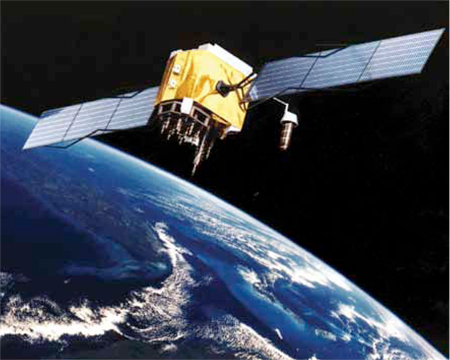Vacuum tubes were used as state-of-the-art electronics in the late 1950s. These were well understood and highly developed. Transistors were still pretty new then. Many of the transistors available did not work well at high frequencies as required in satellites. A high percentage of the computers used still depended on vacuum tubes.
Some of the earliest space probes used film cameras and transmitted th processed film in a manner similar to fax machine. Another technique used in some later vehicles was ‘slow-scan TV.’ It involved a TV camera that took a single image and transmitted it, often very slowly.
It was realised further that better testing, redundancy and flexibility prvided the keys to more reliable space electronics demanded by satellite operation.
oday, use of digital tape recorders and digital cameras to save data and pictures and transmit these to earth, or send commands to probes has been replaced with on-board electronic devices and computers. The firs military satellite to have a microprocessor on board was the DSCS-III launched on October 30, 1982. Before that, ground commands were loaded into registers, and simpler circuits such as timers used to execute the commands. All parts must be able to survive launch, have radiation shielding, be able to radiate enough heat in a vacuum to function and have enough computing power to do the job.
Space exploration with space probes, space-shuttles, space crafts and satellites has proved effective with technological advances not only in the mechanical body parts, launch, guiding, and keeping the temperature of the space vehicle in check during the supersonic glide through the atmosphere and onto the runway but also in the electronic components integrated in the space vehicle design. Electronic component suppliers for space electronics must meet stringent temperature standards, along with radiation-hardening specs. These requirements will only get tougher to meet further requirements as scientists plan to send humans beyond the low-earth orbit to explore the solar system.

Faster turnaround times for satellites and other launches are narrowing the delivery window for aerospace electronics, putting added pressure on electronics technology. With greater requirements for testing space electronics ranging from thermal performance to radiation dose and production tests, the pendulum is swinging away from using commercial parts in space. Further, the requirement for space electronics for use in deep-space probes or in instrumentation to be used on scientifi payloads such as earth-imaging and weather satellites is increasing.
Recently, a spacecraft bound for Jupiter got an armour suit to protect it from the fiercest radiation any space probe has ever encountered. The unmanned Juno space probe will face a treacherous environment with more radiation than around any other planet and needs an armoured shield around its sensitive electronics. Juno is basically an armoured tank going to Jupiter; without its protective shield or radiation vault, its electronics would damage on the very firstpass near Jupiter.
The six-sided radiation shield is made of titanium. Lead, an effective shield against radiation, would be too soft to survive vibrational forces and stresses. While the vault is not designed to completely prevent Jupiter’s radiation from hitting the system, it is expected to dramatically slow down the ageing effect that radiation has on electronics for the duration of the mission.
Problems with space electronics
Reliability of components. Space agencies place reliability at the top of their priorities since the failure of just one component can lead to the loss of a multi-million dollar mission. A clear counter trend is the use of commercial off-the-shelf (COTS) components. While these parts are generally more advanced in terms of processor performance and logic or memory density than those designed specificallyfor use in military or space borne systems, COTS devices do not have the background of design and extensive testing that ensures reliability.
Parts designed for military and aerospace often have a wider range of materials at their disposal than COTS components, particularly when it comes to the materials used to connect the chips to the printed control boards. The more restricted materials used in COTS tend to suffer from greater reliability problems under heat stress. Military-grade parts used for space flightare also tested to a much greater degree than their COTS counterparts—not just over a wider temperature range but also with a greater concentration on faults that cannot be picked up by generic wafer probe and package level tests.
Radiation effect. When a space-bound electronic component passes its test, there remains one big problem—radiation. Radiation is one of the main characterstics of space weather. Radiations of galactic and solar origin determine radiation hazards for people and technology, computer and memory upsets and failures, solar cell damage, radio wave propagation disturbances, and failures in communication and navigation systems.













